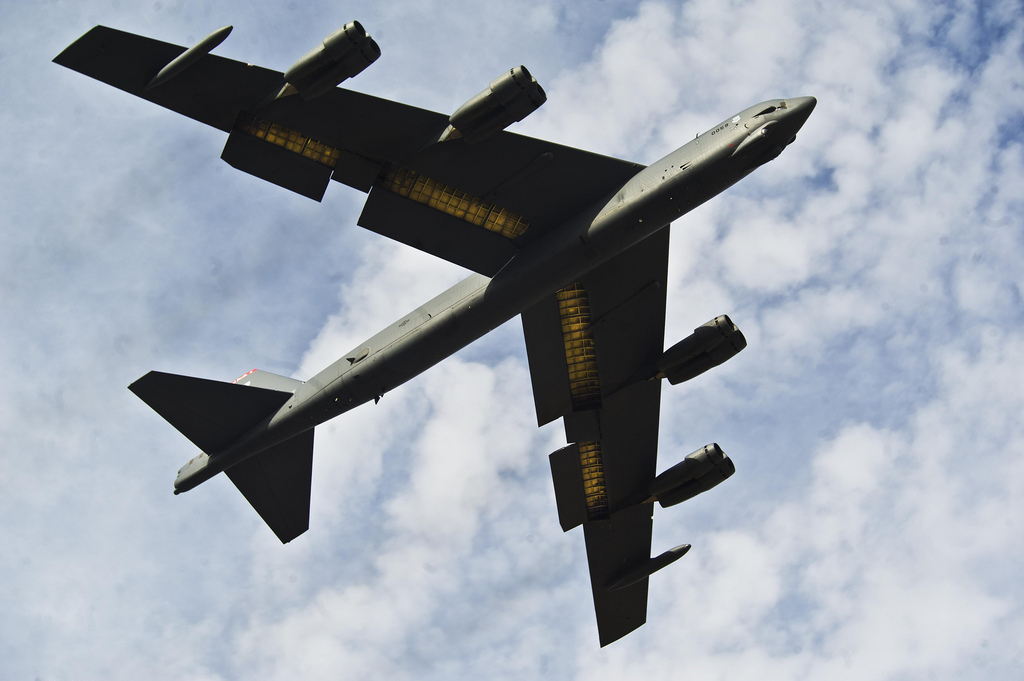Two American Stratofortress bombers flew within 12 miles of the disputed islands.
On Dec. 10, two U.S. Air Force B-52 strategic bombers on a routine long-range mission flew within 12 nautical miles (the standard boundary of the territorial waters) of one of the seven Chinese man-made islands in the South China Sea, sparking China’s protests.
Although Washington has not taken an official stance on sovereignty claims surrounding the islands it does maintain that China’s new islands do not enjoy the traditional 12NM territorial limit. However, according to the Pentagon, the aircraft were not flying a so-called “freedom of navigation” mission (a pre-planned navigation used to assert U.S. rights to “innocent passage” in or close to other nation’s territorial waters): one of the aircraft flew within 2 miles of an artificial island along unintentional route. Interesting, since “navigation errors” are a bit surprising on long-range bombers equipped with redundant GPS, INS systems that should make their navigation quite accurate.
Noteworthy, according to the Associated Press, the B-52 strategic bombers and that they issued radio warnings demanding the aircraft leave the area after the intrusion: last month, a Russian Su-24 bomber that allegedly ignored the radio warnings issued by a Turkish Air Force radar station was shot down by a TuAF F-16 after violating the Turkish airspace near the border with Syria.
China’s Defense Ministry considers the U.S. mission in the vicinity of the islands a serious military provocation and a deliberate attempt at raising tensions in the region.
U.S. B-52 and B-2 bombers routinely fly nuclear deterrence missions in the Asia-Pacific theater. In November 2013, a flight of two U.S. B-52 bombers departed from Guam airbase entered the new Air Defense Identification Zone (ADIZ) over East China Sea close to the disputed islands without complying with any of the rules set by Beijing for the ADIZ. In that case, the mission intentionally skirted the disputed Diaoyu Islands (known as Senkaku islands in Japan).
Image credit: U.S. Air Force




















